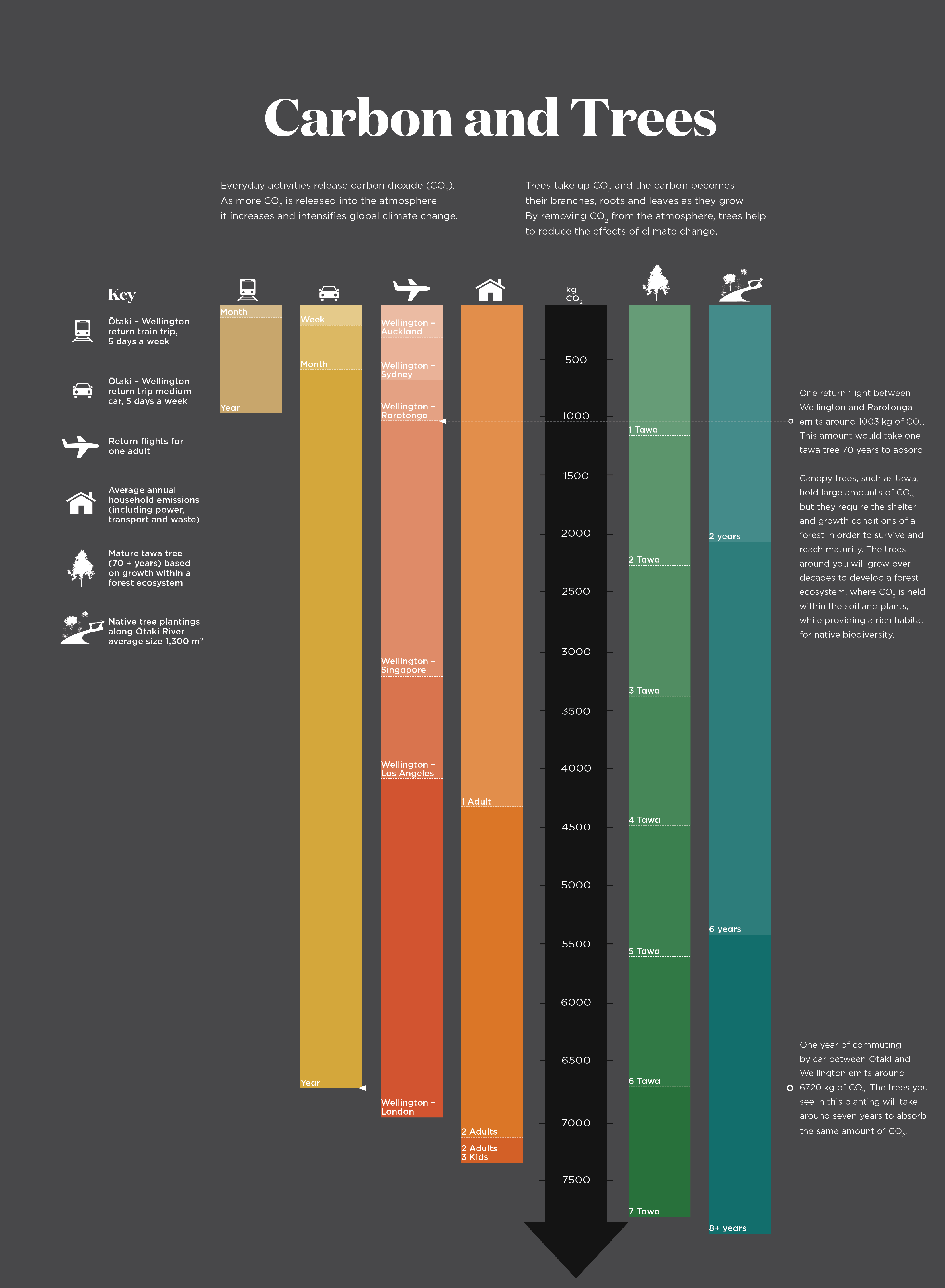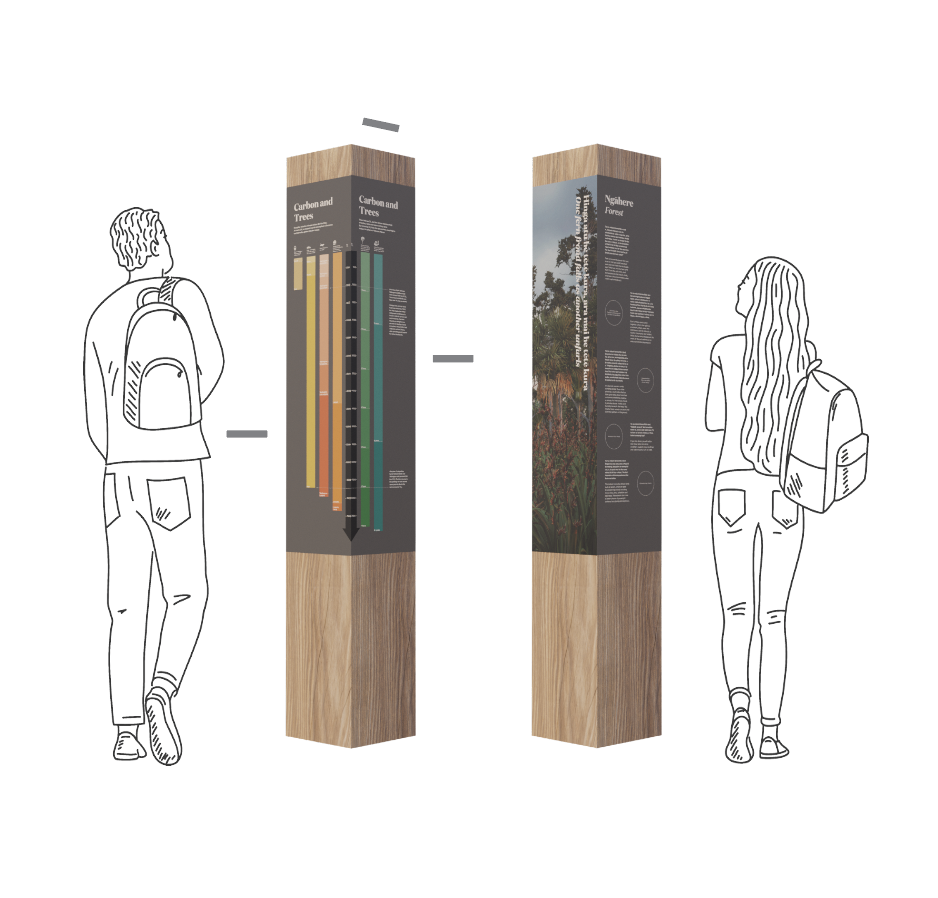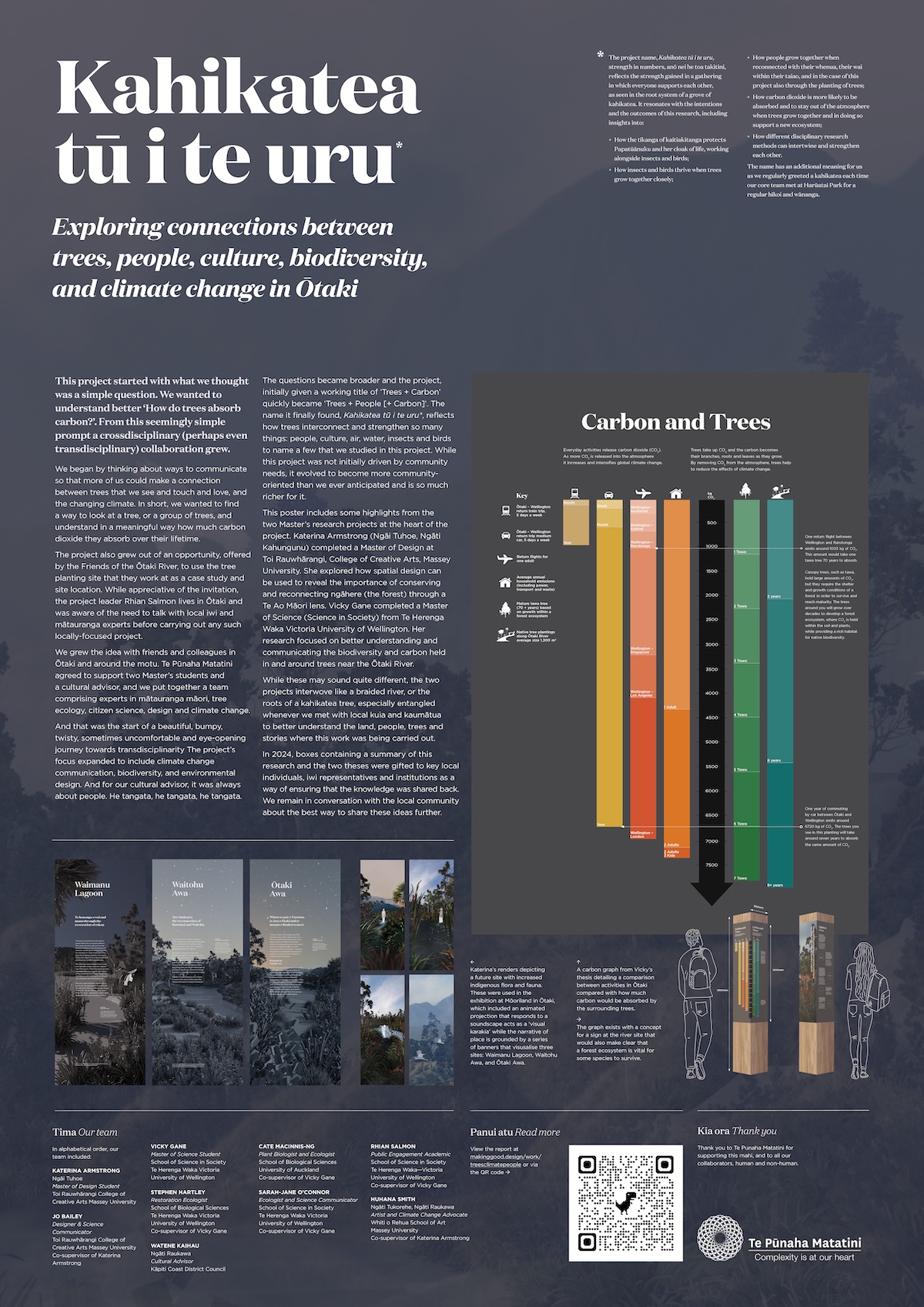Kahikatea tū i te uru
Exploring connections between trees, people, culture, biodiversity, and climate change in Ōtaki
This project started with what we thought was a simple question. We wanted to understand better ‘How do trees absorb carbon?’. From this seemingly simple prompt a crossdisciplinary (perhaps even transdisciplinary) collaboration grew.
We began by thinking about ways to communicate so that more of us could make a connection between trees that we see and touch and love, and the changing climate. In short, we wanted to find a way to look at a tree, or a group of trees, and understand in a meaningful way how much carbon dioxide they absorb over their lifetime.
The catalyst
The project also grew out of an opportunity, offered by the Friends of the Ōtaki River, to use the tree planting site that they work at as a case study and site location. While appreciative of the invitation, the project leader Rhian Salmon lives in Ōtaki and was aware of the need to talk with local iwi and mātauranga experts before carrying out any such locally-focused project.
We grew the idea with friends and colleagues in Ōtaki and around the motu. Te Pūnaha Matatini agreed to support two Master’s students and a cultural advisor, and we put together a team comprising experts in mātauranga māori, tree ecology, citizen science, design and climate change.
And that was the start of a beautiful, bumpy, twisty, sometimes uncomfortable and eye-opening journey towards transdisciplinarity The project’s focus expanded to include climate change communication, biodiversity, and environmental design. And for our cultural advisor, it was always about people. He tangata, he tangata, he tangata.
The questions became broader and the project, initially given a working title of ‘Trees + Carbon’ quickly became ‘Trees + People [+ Carbon]’. The name it finally found, Kahikatea tū i te uru*, reflects how trees interconnect and strengthen so many things: people, culture, air, water, insects and birds to name a few that we studied in this project. While this project was not initially driven by community needs, it evolved to become more community-oriented than we ever anticipated and is so much richer for it.
Our student researchers
Katerina Armstrong (Ngāi Tuhoe, Ngāti Kahungunu) completed a Master of Design at Toi Rauwhārangi, College of Creative Arts, Massey University. She explored how spatial design can be used to reveal the importance of conserving and reconnecting ngāhere (the forest) through a Te Ao Māori lens. Vicky Gane completed a Master of Science (Science in Society) from Te Herenga Waka Victoria University of Wellington. Her research focused on better understanding and communicating the biodiversity and carbon held in and around trees near the Ōtaki River.
While these may sound quite different, the two projects interwove like a braided river, or theroots of a kahikatea tree, especially entangled whenever we met with local kuia and kaumātua to better understand the land, people, trees and stories where this work was being carried out.
In 2024, boxes containing a summary of this research and the two theses were gifted to key local individuals, iwi representatives and institutions as a way of ensuring that the knowledge was shared back. We remain in conversation with the local community about the best way to share these ideas further.

A carbon graph from Vicky’s thesis detailing a comparison between activities in Ōtaki compared with how much carbon would be absorbed by the surrounding trees. Screen-readable PDF in the summary report.

The graph exists with a concept for a sign at the river site that would also make clear that a forest ecosystem is vital for some species to survive.
Our poster about the project at the 2024 TPM hui (click to view A0 size pdf)
